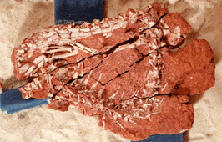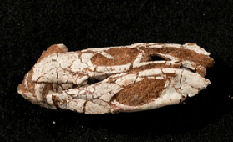According to the study, this
reptile roamed the earth between 110 and 80-million years
ago on what was then the super-continent of Gondwana, the
land mass that eventually broke up into Africa, the Arabian
peninsula, Australia, Madagascar, India, Antarctica and
South America.
If one digs a little deeper, we discover
that the generally accepted age of the earth is roughly
4.5-billion years.
The oldest rocks that have been found so far (on the Earth)
date to about 3.8 to 3.9 billion years ago (by several radiometric
dating methods). Some of these rocks are sedimentary, and
include minerals that are themselves as old as 4.1 to 4.2
billion years.
While these values do not compute an age
for the Earth, they do establish a lower limit (the Earth
must be at least as old as any formation on it). This lower
limit is at least concordant with the independently derived
figure of 4.55 billion years for the Earth's actual age.
But that is derived from man’s current
knowledge of science.
Imagine what else man will discover in another
100-million years.
Imagine how man will evolve in another 100-million years.
I am in awe.
But I am drifting.
The 100-million-year-old reptile has been
named Pakasuchus Kapilimai from "paka", the Swahili
word for cat, and "souchos," Greek for crocodile.
Kapilimai is a nod to Tanzania's pioneering palaeontologist
Saidi Kapilima.
The pics below show the curled up skeleton
and the skull of crocopussy.


The reptile is about the size
of a domestic cat with a lean profile, flexible backbone
and relatively little scaly armour around its midriff.
But the most distinctive feature of Pakasuchus kapilimai
is its teeth.
It shared the overhanging, fang-like canines
that today's alligators and crocodiles use to rip into their
victims' flesh before swallowing them more-or-less whole.
But it also had specialised teeth that look suspiciously
like molars, leading researches to believe that it had the
ability to chew it’s food, something the modern-day
croc cannot do.
Today’s crocs can only rip & swallow.
That sounds like a nice title for a song, or maybe the name
of a rapper.
Rip & Swallow. It’s got a nice ring to it, don’t
you agree?
Kader Khan
